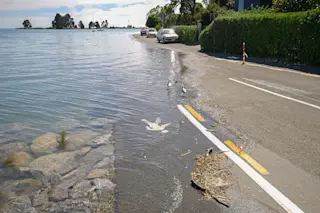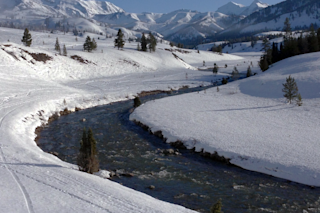In a recent study, researchers examined 99 coastal cities and found nearly all of them were rapidly sinking. The study showed development and groundwater depletion has been depressing the surface. In many of these coastal communities, subsiding land may create a compounding risk of flooding, adding to the rising sea levels due to global warming.
“Anywhere you are worried about sea level rise, you should also be worried about subsidence,” says study author Matt Wei, a University of Rhode Island associate professor of oceanography.
Although subsidence, a fancy word for sinking ground, is more prevalent in East Asia, Wei and his colleagues also observed it in the U.S., Africa, Europe and Australia. In short, it is a global phenomenon with global implications. In many places, research like Wei’s could help prevent disastrous consequences during natural disasters.
U.S. Geological Survey employee Richard Ireland took a photograph in San Joaquin Valley, Cali. ...















